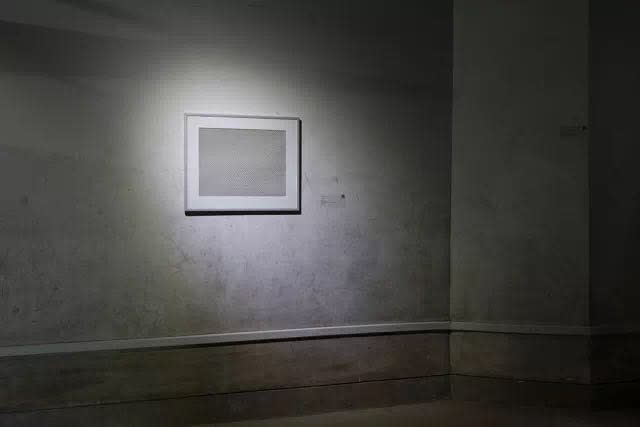Academic Director: ZHANG Peili
Curator: LU Leiping
Artists:
LU Lei, WU Junyong, SHAO Yi, ZHANG Ding,ZHANG Liaoyuan, WU Juehui, PENG Yun, LU Yang, JIANG Zhuyun, WANG Xin, MIAO Ying, LI Ming, LIN Ke, ZHANG Lehua, YI Lian, FENG Chen, CAO Shu, LANG Can, GUO Xi, DENG Yuejun, LIU Guoqiang, HU Weiyi, DING Shiwei
Duration: 7-27 April 2018
Venue: 103 of C Zone and B1 of B Zone, Building 1, Nanshan Campus, China Academy of Art, Hangzhou
Organizer: School of Intermedia Art, China Academy of Art
Chief Coordinator: FAN Li
Technical Support: SHI Hongfa
Curatorial Assistants: ZHANG Junlei, TONG Xi, YANG Youchen, HUANG Jingying
Visual Design: ZHANG Zhilin
Presence: In the Name of New Media Art
LU Leiping
Initiated by Professor XU Jiang, the president of China Academy of Art, and directed by Mr. ZHANG Peili, the pioneer of Chinese new media art, the groundbreaking New Media Art Centre was inaugurated in China Academy of Art (CAA) in 2001. The faculty admission commenced in 2003, making it the first specialising in the teaching of new media art before any other higher education providers in China. For nearly two decades, what gratifies the teachers most is always the growth and achievement of their students. The “presence” of the twenty-three young artists today is precisely the testimonial to such attainments, with their sheer exuberance that is deep-rooted and blossoming in the field of Chinese contemporary art. As representatives of all the graduates since the establishment of the New Media Art Department in CAA, the participating artists here were blessed with the access to the systematised education fuelled by the concepts of contemporary art and experimental media art. They thereafter confront the progressively digitalised and cyberised society and life, continue the artistic careers with their vigorous creation and deliver a dazzling performance. Perhaps all these experiences are what “presence” actually means for them.
In Heidegger’s philosophy, “presence”, or “Anwesen” in German, can be interpreted as Being manifesting itself; or more specifically, the “presence” signifies the things that exhibit and demonstrate themselves directly in a quest that “goes back to things themselves” and emphasises the directness, disclosedness and openness of human experience. Guided and inspired by the avant-garde practitioners emerging out of the '85 New Wave Movement, such as ZHANG Peili and GENG Jianyi, the New Media Art Department breaks the convention by the employment of a broad range of domestically and internationally renowned contemporary artists as a supplement to its teaching staff, hence inviting the firsthand, dynamic and liberating artistic views and experiences. The presence of such pedagogy is characterised not by obstinacy or bigotry, but perseverance and exploration in an ever-changing vicissitudes of time. Additionally, the “presence” necessitates the “Being-in” in a certain “clearing” or field; the being can only be, as a being, if it stands within, and stands out within, what is illuminated in this clearing. In the same vein, the students encounter, interact and study in new media art, whose unconstrained and unconcealed field offers the prospect of becoming real artists, or, in other words, the possibility of the“presence”. This is exactly where the education of arts is supposed to happen: in the “clearing” (or Lichtung), a place from which the trees are removed and thus creates an unexpected vista. Indeed, it seems like a utopian dream. Yet, it epitomises the very aim set by the educators like LIN Fengmian and PAN Tianshou when they founded Hangzhou National School of Art in 1928, as well as the true significance of art academies.
“Presence: Young Artist Exhibition” is unveiled on the ninetieth anniversary of China Academy of Art and is the perfect opportunity to understand, decide and display as a whole the merit of the education of new media art in the past seventeen years. More than fifty artworks are selected by the artists themselves for the exhibition. They were produced between 2005 and 2018 in a multitude of mediums and forms including photography, video, internet, animation, sound, mechanic and interactive installation. The artpieces, however, spontaneously construct two galleries, one overground and the other underground, with contrasting ambiences: the plaza space which is interwoven by games with revelries, movie theaters with building sites, and openness with privacy; and the cyber space which is swamped with elements of virtual reality, artificial intelligence, computerised cyborg, decadent city and magic realism to name a few. Ultimately, their appearance, presence and approaches drive us into a new world, a new reality and new aesthetics.




